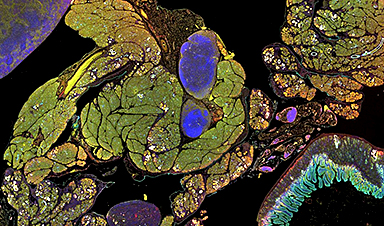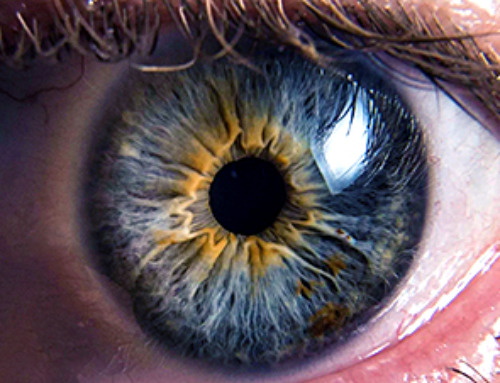In a recent study published in Science Advances, a group of researchers assessed whether dendritic spine head diameter in the temporal cortex is a better predictor of episodic memory performance in older adults than synapse quantity, accounting for β amyloid (Aβ) plaques (Clusters of protein fragments in the brain), neurofibrillary tangles (NFTs) (Twisted protein fibers inside brain cells), and sex.
Background
Episodic memory, essential for recalling personal experiences, declines with age and neurodegenerative diseases, especially due to temporal cortex injury. Dendritic spines, key postsynaptic compartments in the brain, influence synapse strength and are crucial for memory. Spine loss naturally occurs with aging, particularly in regions vital for memory, and is more strongly associated with memory impairment in Alzheimer’s disease (AD) (A progressive brain disorder causing memory loss) than Aβ plaques or NFTs.
Further research is needed to clarify how specific features of dendritic spines contribute to memory function in aging beyond the effects of natural spine loss and common neurodegenerative pathologies.
About the study
Postmortem samples of brain areas Brodmann area (BA) 6 and BA37 were obtained from participants in the Religious Orders Study and Rush Memory and Aging Project (ROSMAP), which includes individuals who enroll without known dementia and agree to annual clinical evaluations and brain donation upon death.
The study was approved by an institutional review board at Rush University Medical Center. All participants provided informed consent, including consent for brain donation and sharing of their resources. The samples analyzed in this study covered a range of brain pathologies and cognitive scores, with appropriately sized frozen tissue samples available for experiments.
Cognitive testing of ROSMAP participants included assessments of episodic memory, perceptual speed, visuospatial ability, semantic memory, and working memory, with composite scores calculated for each domain. Additionally, the Mini-Mental State Examination (MMSE) was administered, and clinical diagnoses of major depressive disorder were made based on established criteria.
Dendritic spines and synaptic markers were visualized using Golgi-Cox staining of brain samples from BA6 and BA37. Imaging of dendrites was performed by a blinded experimenter using bright-field microscopy at high magnification. Dendritic segments meeting specific criteria were selected for analysis, and 3D digital reconstructions of dendrites and spines were conducted using specialized software. Spine morphology was classified into various categories, and quantitative measurements were collected for analysis. In total, 45,763 μm of dendrite length from 2,157 neurons were analyzed, yielding data on 55,521 individual spines.
Statistical analyses involved a multistage approach to validate the generalizability of results. Dendritic spine traits were analyzed using LASSO (Least Absolute Shrinkage and Selection Operator) regression to identify which features most significantly contributed to episodic memory performance in older adults. Cross-validation techniques ensured model accuracy, and the results were replicated in an independent sample. Spearman correlations were used to explore relationships between dendritic spine features, pathology, and memory scores, with multiple comparisons controlled for using an appropriate false discovery rate.
Study results
Dendritic spines were sampled and analyzed from the frontal and temporal cortices of 128 individuals from the ROSMAP. These postmortem samples were taken from BA6 within the premotor cortex and BA37 within the temporal cortex. The participants, who had a mean age of 90.53 ± 6.06 years, displayed varying cognitive performance scores and levels of AD-related neuropathology. Using bright-field microscopy, dendritic spine density and morphology in BA37 and BA6 tissue slices were imaged at 60X magnification and reconstructed in three dimensions. The data were then analyzed to determine the relationship between dendritic spine features and episodic memory performance.
The datasets from BA37 and BA6 were subjected to a supervised learning algorithm to identify specific dendritic spine features that might predict episodic memory performance beyond the effects of other variables, such as AD-related neuropathology. The samples were divided into a discovery set (n = 63) and a validation set (n = 62), with three cases excluded due to missing data. LASSO regression was performed on the discovery set to identify the dendritic spine features most strongly associated with episodic memory function. The analysis revealed that spine head diameter in BA37 was the most significant predictor of episodic memory performance.
The results were validated using nested model cross-validation in the replication set, confirming that models including spine head diameter, along with NFTs, neuritic Aβ plaques, and sex, provided the best prediction of episodic memory. Removing spine length, density, and volume from the model further improved its accuracy, highlighting the importance of spine head diameter in the temporal cortex for memory function.
Conversely, LASSO regression on the BA6 dataset identified spine length as the strongest predictor of episodic memory performance, although its association was weaker compared to BA37 spine head diameter. Models incorporating BA6 spine features did not perform as well, indicating that the contribution of spine head diameter to memory performance is specific to the BA37 temporal cortex.
Further analysis showed a significant positive correlation between BA37 spine head diameter and episodic memory score, even after controlling for multiple comparisons. In contrast, BA37 spine density did not significantly correlate with cognitive scores or AD-related pathology, and no significant correlations were found between BA6 spine features and cognition or pathology measures.
Conclusions
To summarize, using tissue samples from 128 ROSMAP participants, the analysis revealed that larger dendritic spine head diameters in the temporal cortex were associated with better episodic memory performance, while spine density showed no significant effect. These findings suggest that synaptic strength, rather than the number of synapses, is crucial for maintaining memory in older adults, with implications for targeted therapeutic strategies in preclinical AD.
- Courtney K. Walker et al. Dendritic spine head diameter predicts episodic memory performance in older adults.Sci. Adv.(2024).
DOI:10.1126/sciadv.adn5181 https://www.science.org/doi/10.1126/sciadv.adn5181
News
Studies detail high rates of long COVID among healthcare, dental workers
Researchers have estimated approximately 8% of Americas have ever experienced long COVID, or lasting symptoms, following an acute COVID-19 infection. Now two recent international studies suggest that the percentage is much higher among healthcare workers [...]
Melting Arctic Ice May Unleash Ancient Deadly Diseases, Scientists Warn
Melting Arctic ice increases human and animal interactions, raising the risk of infectious disease spread. Researchers urge early intervention and surveillance. Climate change is opening new pathways for the spread of infectious diseases such [...]
Scientists May Have Found a Secret Weapon To Stop Pancreatic Cancer Before It Starts
Researchers at Cold Spring Harbor Laboratory have found that blocking the FGFR2 and EGFR genes can stop early-stage pancreatic cancer from progressing, offering a promising path toward prevention. Pancreatic cancer is expected to become [...]
Breakthrough Drug Restores Vision: Researchers Successfully Reverse Retinal Damage
Blocking the PROX1 protein allowed KAIST researchers to regenerate damaged retinas and restore vision in mice. Vision is one of the most important human senses, yet more than 300 million people around the world are at [...]
Differentiating cancerous and healthy cells through motion analysis
Researchers from Tokyo Metropolitan University have found that the motion of unlabeled cells can be used to tell whether they are cancerous or healthy. They observed malignant fibrosarcoma cells and [...]
This Tiny Cellular Gate Could Be the Key to Curing Cancer – And Regrowing Hair
After more than five decades of mystery, scientists have finally unveiled the detailed structure and function of a long-theorized molecular machine in our mitochondria — the mitochondrial pyruvate carrier. This microscopic gatekeeper controls how [...]
Unlocking Vision’s Secrets: Researchers Reveal 3D Structure of Key Eye Protein
Researchers have uncovered the 3D structure of RBP3, a key protein in vision, revealing how it transports retinoids and fatty acids and how its dysfunction may lead to retinal diseases. Proteins play a critical [...]
5 Key Facts About Nanoplastics and How They Affect the Human Body
Nanoplastics are typically defined as plastic particles smaller than 1000 nanometers. These particles are increasingly being detected in human tissues: they can bypass biological barriers, accumulate in organs, and may influence health in ways [...]
Measles Is Back: Doctors Warn of Dangerous Surge Across the U.S.
Parents are encouraged to contact their pediatrician if their child has been exposed to measles or is showing symptoms. Pediatric infectious disease experts are emphasizing the critical importance of measles vaccination, as the highly [...]
AI at the Speed of Light: How Silicon Photonics Are Reinventing Hardware
A cutting-edge AI acceleration platform powered by light rather than electricity could revolutionize how AI is trained and deployed. Using photonic integrated circuits made from advanced III-V semiconductors, researchers have developed a system that vastly [...]
A Grain of Brain, 523 Million Synapses, Most Complicated Neuroscience Experiment Ever Attempted
A team of over 150 scientists has achieved what once seemed impossible: a complete wiring and activity map of a tiny section of a mammalian brain. This feat, part of the MICrONS Project, rivals [...]
The Secret “Radar” Bacteria Use To Outsmart Their Enemies
A chemical radar allows bacteria to sense and eliminate predators. Investigating how microorganisms communicate deepens our understanding of the complex ecological interactions that shape our environment is an area of key focus for the [...]
Psychologists explore ethical issues associated with human-AI relationships
It's becoming increasingly commonplace for people to develop intimate, long-term relationships with artificial intelligence (AI) technologies. At their extreme, people have "married" their AI companions in non-legally binding ceremonies, and at least two people [...]
When You Lose Weight, Where Does It Actually Go?
Most health professionals lack a clear understanding of how body fat is lost, often subscribing to misconceptions like fat converting to energy or muscle. The truth is, fat is actually broken down into carbon [...]
How Everyday Plastics Quietly Turn Into DNA-Damaging Nanoparticles
The same unique structure that makes plastic so versatile also makes it susceptible to breaking down into harmful micro- and nanoscale particles. The world is saturated with trillions of microscopic and nanoscopic plastic particles, some smaller [...]
AI Outperforms Physicians in Real-World Urgent Care Decisions, Study Finds
The study, conducted at the virtual urgent care clinic Cedars-Sinai Connect in LA, compared recommendations given in about 500 visits of adult patients with relatively common symptoms – respiratory, urinary, eye, vaginal and dental. [...]





















